
Number 2, November 1999
The Natural Hazards Informer is peer-reviewed series that summarizes current knowledge about various aspects of natural hazards for practitioners, researchers, public policy makers, and others. It is distributed free to all subscribers of the Natural Hazards Observer. If you already receive the Observer, do nothing. You will automatically receive upcoming issues of the Informer.
This issue of the Informer explains current knowledge about educating the public on earthquake hazards. With minimal tailoring, principles of effective earthquake education can be transferred to public education efforts for other hazards. This Informer suggests effective approaches and offers tips for developing and implementing successful projects. Case studies and examples help to give the discussion some context, and a list of resources suggests places to go for further information.
If you are concerned about the vulnerability of a community, county, or state to earthquake hazards, interested in raising the citizenry's awareness of the risk, and hopeful that people or their organizations will take steps to reduce potential losses, this Informer will give you tools and strategies for effective action. A quick review of what experience and research have taught us about past public education projects and campaigns will yield a deeper understanding of what works and what doesn't. Since time, energy and money are so frequently short, we hope to save everyone from wasting resources on ineffective approaches. Emergency managers, academic researchers, community activists, and federal or state funding agencies will find the information helpful as they create or evaluate public education initiatives on earthquakes or other natural hazards.
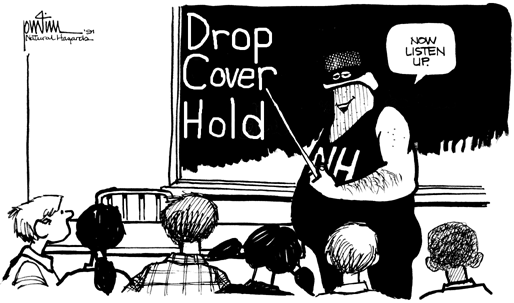
by Sarah Nathe, Paula Gori, Marjorie Greene, Elizabeth Lemersal, and Dennis Mileti
The goal of most public education efforts is to change people's behavior. Earthquake education attempts to increase protective actions by people, groups, and institutions by presenting information about the hazard and the risk it poses. If done effectively, it fosters uncertainty, causing people to wonder about their environment and to question their safety in it. A good public education project gives people something to mull over and to discuss with friends, family, and colleagues. It induces them to seek more information to answer their questions, and its specialists are there with clear information and answers when the questions are asked. Despite all that, the desired changes in behavior may come years later, if at all.
Other successful public education campaigns follow that model. Quit smoking. Fasten your seat belt. Don't litter. Those famous campaigns all began by showing the risks or problems associated with particular behaviors. They had three things going for them:
Generous funding by one or more interest groups helped with the latter. An effective public education program posits a problem and then says how to solve it--over and over again. And, even though public education involves colorful pamphlets, eye-catching posters, and provocative public interest announcements on TV and radio, even more valuable is an understanding of the dynamics of human behavior, effective ways to change it, and a systematic approach to carrying it out over time.
Certain personal and social characteristics of individuals make them more or less likely to heed information about hazards and do something to increase their safety. Previous experience with a natural disaster, higher levels of formal education, middle age, and family connections may make people more apt to take protective actions. For example, a middle-aged person whose house was seriously damaged in the Northridge earthquake is likely to live in a bolted and braced one today. On the other hand, youth and gender make people less likely to increase their safety. A 1989 survey that asked people what they did during the Loma Prieta earthquake revealed that most 20-something males did not try to protect themselves from injury while the shaking was going on.
Public education doesn't change any of those variables, but takes advantage of them to deliver information to various groups to generate questions about risk, options, and actions. Good information can prompt almost anyone to question their environment and search for more information: the first steps in the sometimes long journey to changed behavior and increased protection.
Research into the psychology of perception and belief indicates that--as counterintuitive as it may seem--perceived risk does not contribute directly to taking protective action.
Perversely enough, most humans do not behave in accordance with their perceptions or attitudes. That is, a person living in San Leandro, California, may understand the considerable risk from a Hayward fault earthquake, but may not have done one thing to make his or her house resist the ground motions such an earthquake will produce.
Nor do people think in probabilities. Typically, the human thought process about future events is pretty binary: it will happen/it won't happen; it will affect me/it won't. Fancy probability estimates for an earthquake on the San Andreas fault won't change that. The official probability will be added to other pieces of information, beliefs, and experiences, and may--if accompanied by continuous, credible information over time--inspire some questioning and fact-seeking in the future.
Public educators have learned through trial and error that people are generally not motivated by sermons on why they ought to do something. Neither moral exhortations nor discourses on ethical or legal imperatives produce the desired behavior change in the average citizen or organization. People are more apt to follow our agenda if they work out a solution themselves, with helpful information from specialists. Not surprisingly, most people are motivated to change their behavior when they think it's their own idea.
Much research has been done, in numerous disciplines, on how human behavior can be changed. However, very little research has been done on whether public education initiatives on hazards are successful in increasing protective actions, although a few efforts have been systematically evaluated.
One study in the early 1980s assessed the responses of Los Angeles residents to news coverage of the Palmdale uplift, a rare geological phenomenon in an area along the San Andreas fault which was thought, between 1976 and 1979, to be a precursor to an earthquake. Social scientists surveyed hundreds of people to determine where they received their information on earthquakes and how they evaluated what they got. They concluded that scientists and the media should make available credible information regarding an event that arouses widespread curiosity. Otherwise, when reliable information is not available, rumor fills the gap.
In the late 1980s, another research effort analyzed the effectiveness of a pamphlet in raising awareness of earthquake risk among residents in communities near Parkfield, California. The U.S. Geological Survey had announced that the Parkfield segment of the San Andreas fault in central California was likely to experience a moderate earthquake between 1986 and 1993. The California Office of Emergency Services mailed a comprehensive pamphlet to residents in the affected area that described the probabilities and the possible impacts of the quake and recommended certain actions to reduce damages. The study evaluated which pieces of information moved residents to take protective action.

Some of the findings of the study have been elevated to immutable laws of effective public education:
(Begin with bottom step and go up.)
| When shall I begin? | ||||||||||||||||||||
| Has anybody I know done it? | ||||||||||||||||||||
| How complicated is it? | ||||||||||||||||||||
| What will it cost to reduce my losses? | ||||||||||||||||||||
| Can I do anything to reduce them? | ||||||||||||||||||||
| Will I have losses if it does? | ||||||||||||||||||||
| Can it damage my home or office? | ||||||||||||||||||||
| What damage can it do? | ||||||||||||||||||||
| Earthquake: What is it? | ||||||||||||||||||||
In the early 1990s a similar study concerned a publication in the Bay Area that explained in lay language the findings of a scientific report on earthquake probabilities. Following their release of a (very) technical report, the U.S. Geological Survey thought it wise to explain to the public what it meant and what they ought to do about it. In concert with a number of other agencies, a booklet--The Next Big Earthquake in the Bay Area--was developed and distributed to millions of residents as a Sunday newspaper insert. Shortly after, researchers queried a large number of readers about their responses to the booklet and its information.
The findings of this research added to the collection of rules of earthquake education:
Many people and organizations reported that they took actions after reading the insert, not only because it made them aware of specific actions to take, but also reinforced things they had already heard elsewhere.
At almost the same time, a different but complementary investigation was underway, also in the Bay Area. This one asked people about their preferred sources of information on earthquake risk and mitigation. Though this study did not set out to determine whether the information actually changed behavior, its findings are instructive and corroborate the observations of earlier research. In general, people prefer public education programs that do the following:
Educational organizations with a high-profile presence in the area over time were more trusted than those without a track record. Deemed unsuccessful were education programs that do not feature specialists, do not adapt the material to their constituents, and take only the grocery bag or mass mailing approach. This study highlighted the error of assuming a very homogeneous public and advocated tailoring information materials to the many special groups in an area. For example, the approach to, and materials for, middle class homeowners will be different from those for renters, and those for school districts will not be like those for large corporations.
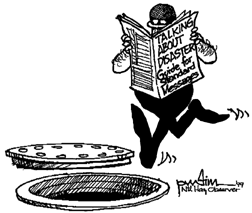
A study of public education outside California was undertaken by a professional staff member of the American Red Cross in affiliation with the University of Maryland. The 1992 study of message content and images supported a popular hunch that too much gloom and doom is just as bad as no information at all. A few well-chosen images of destruction have a useful impact on most people early in a presentation. However, when verbal messages on how to prepare for an earthquake are juxtaposed with photos of collapsed structures, people have trouble dealing with the verbal/visual mismatch. People tend to remember the visual message more clearly than the verbal, and repeated images of damage sometimes convince people there is nothing they can do about earthquakes. Far more effective are coordinated verbal and visual representations of what to do and how. Finding the right mix of information on potential losses and on effective actions is critical to the success of public education.
The Gold Standard |
| The U.S. Geological Survey collaborated with a number of specialists--earth scientists, engineers, architects, community-based organizers, and public educators--to create The Next Big Earthquake in the Bay Area: Are You Prepared? Designed to take into account the recommendations for effective education that emerged from the Parkfield study, the multi-color booklet had easy-to-read maps, translations of probabilities in words and graphics, explanations of building vulnerabilities, and suggestions on steps to take to reduce personal and organizational losses in an earthquake. First distributed as a Sunday newspaper insert, the booklet has been reprinted many times at the request of earthquake educators in the Bay Area. It was also translated into Chinese, Spanish, and Braille. So widely admired is it that groups elsewhere have developed similar booklets to explain their vulnerabilities: southern California, the north coast of California, the Puget Sound area, and Alaska. |
One last study bears mentioning; it concerned public response to a spurious 1990 earthquake prediction on the New Madrid fault in the Central United States. The findings confirmed the need for governments and scientists to place accurate information before the public to counter inaccuracies that may be receiving media attention. When Iben Browning--a scientist, albeit not an earth scientist--predicted a large quake on the New Madrid fault on December 3, countless people believed him and reacted accordingly. The populace in the heartland, which had never been taught much about earthquakes, did not have the analytical tools to question Browning's prediction. Credible scientists and government spokespersons were slow to disagree with Browning, perhaps because they hadn't learned the lesson of the Palmdale uplift study mentioned above. Once they responded and released accurate information, however, the "prediction" provided an opportunity for solid public education.
Both empirical research and seasoned observation support the golden rule of public education for hazards: all the sophisticated materials and behavior modification techniques do not have the force of one good disaster to change both behavior and public policy, at least in the short term. Losing something in an earthquake, or knowing somebody who did, has inspired many people and organizations to take protective actions. During the well-known "window of opportunity" that opens following a disaster, abundant information from various credible sources in the affected locale will increase the chances for behavior change.
However, while people and organizations are more apt to alter behaviors after a disaster strikes, change is most likely when public educators have already worked to make sure the problem is recognized, the solution is known, and some advocates are already in place. Do not wait for the window to open; build a sustained advocacy program beforehand. Not working constantly may result in waiting forever.

Take advantage of a window opening someplace else. After the 1995 earthquake in Kobe, Japan, for example, there was fleeting but pronounced interest in earthquake risk in both the Bay Area and Seattle--each with a built environment and setting similar to Kobe. A number of earthquake organizations on the West coast seized this golden opportunity to draw comparisons between the Kobe quake and expected impacts due to local temblors.
Use it while you can, for the window is not open long! The fleeting interest wanes. A population that jams the phone lines requesting earthquake loss reduction information in January of one year will not be doing so the next. A public policy maker's memory and attention are even shorter than the public's. Typically, she or he will not keep hazard mitigation high on the list of big issues for more than two or three months.
Information at Your Finger Tips |
| The Earthquake Information Network (EQNET) is maintained by a consortium of national, regional, and state organizations working to share earthquake-related information and promote earthquake safety. The purpose of EQNET is to provide access to a comprehensive and up-to-date list of Internet resources about earthquakes and the issues surrounding them. The Web page offers links to a wide variety of information sources. Among the many areas of interest are: education, disaster management, seismology/geophysics, policy/planning/socioeconomics, structural engineering, government agency initiatives, products and services, and calendar/conferences. Point your search engine to: http://www.eqnet.org. |
Below are suggestions for successful public education about earthquakes, derived from the systematic research mentioned above and from the authors' years of campaigns and programs. First we explain the ideal message, and then we recommend ways of delivering it. The bulleted items are not in descending order of importance; each is critical.


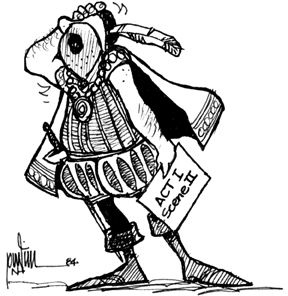
Helpful Tip |
| The National Disaster Education Coalition is a group of federal agencies and nonprofit organizations that support common goals in disaster education. This group has developed a standardized guide on disaster safety messages, providing information that all organizations agree on for national use. The guide covers 13 hazards, as well as general preparedness issues. It is in the public domain and can be used by anyone. It is available in print from any local Red Cross chapter, or can be downloaded from http://www.redcross.org/disaster/safety/guide.html |
1) Describe potential losses. Generally, people can't imagine the impact an earthquake could have on their community, their house, or their place of work, so they must be assisted by descriptions of other earthquakes, pictures, scenarios, or computer-based loss estimation maps. The essence of this task is working to overcome the almost universal human tendencies to conclude that it can't happen here or it won't happen to me. The more relevant the description can be to the situation of the audience, the more likely it is that they will attend to it. A good educator can find "the local angle" in any earthquake--even in a far-off land--and work it.
2) Discuss the odds that the losses will take place in a certain amount of time. Once people understand that it could, indeed, happen here, they must be further convinced that it may happen to them: in the next 10 years, the lifetime of their mortgage, or during their watch. Although almost no one but mathematicians and professional gamblers really understands odds, most people will want to know the likelihood of a quake in an uncomplicated sort of way and in a smallish number of years. Probability estimates will not, in themselves, motivate people to take action, but the information will assist in creating the uncertainty that is so important to behavior change. Earthquake prediction is a very inexact science, but where geoscientists have some understanding of the behavior of specific faults and the frequency of quakes on them, they should offer these rough forecasts. For this reason, the U.S. Geological Survey updated its probability estimates for earthquakes in the Bay Area on the 10th anniversary of the Loma Prieta quake.
3) Explain how to cut losses. A person with a clear picture of his or her possible losses must quickly be offered suggestions and directions for how to reduce them. Without these blueprints, people can fall prey to a fatalistic inertia . Appropriate assistance may take many forms: a how-to video for homeowners on strengthening a cripple wall; evacuation guidelines for a school; a business resumption planning process for a corporation or a city government; encouragement and help from a neighborhood emergency response team; or recommended policy changes for a water system. People can be guided to mitigation in endless ways.

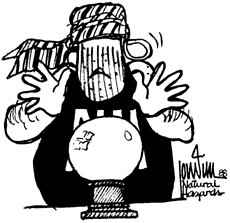

Public education is a complicated process--on both the delivery end and receiving end. Campaigns must be coherent and collaborative, their information must be credible and understandable, and the information must reach its intended audience. In that statement is a prescription for close cooperation among technical specialists and educators, constant communication among educational organizations, and sophistication and creativity in the message translators and communicators.
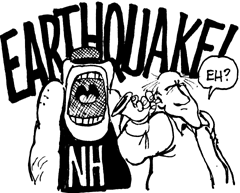
Hamlet, Act V, Scene 2

Sarah Nathe is the Disaster-Resistant University project manager at the University of California, Berkeley. She can be reached at UC Berkeley, Office of the Chancellor, 200 California Hall, #1500, Berkeley, CA 94720; (510) 642-4627; fax: (510) 642-3359; e-mail: sknathe@uclink4.berkeley.edu.
Paula Gori is assistant coordinator with the Landslide Hazard Program and Earth Surface Dynamics Program of the U.S. Geological Survey in Reston, Virginia.
Marjorie Greene is special projects manager at the Earthquake Engineering Research Institute in Oakland, California.
Elizabeth Lemersal is physical scientist with the National Earthquake Program of the Federal Emergency Management Agency in Washington, D.C.
Dennis Mileti is professor of sociology and director of the Natural Hazards Research and Applications Information Center at the University of Colorado in Boulder.
Bolton, Patricia A. and Carlyn E. Orians, 1992, Earthquake Mitigation in the Bay Area: Lessons from the Loma Prieta Earthquake. Seattle, Washington: Battelle Human Affairs Research Centers. To order, call Battelle, (206) 528-3310.
Farley, John E., 1998, Earthquake Fears, Predictions, and Preparations in Mid-America. Carbondale and Edwardsville, Illinois: Southern Illinois University Press. Ordering information can be found on-line at http://www.siu.edu/~siupress.
Lopes, Rocky, 1992, Public Perception of Disaster Preparedness Presentations Using Disaster Damage Images. Working Paper #79. Boulder, Colorado: Natural Hazards Research and Applications Information Center, University of Colorado. To order, contact the center: (303) 492-6819; e-mail: hazctr@spot.colorado.edu; WWW: http://www.colorado.edu/hazards.
Mileti, Dennis S., JoAnne D. Darlington, Collen Fitzpatrick, and Paul W. O'Brien, 1993, Communicating Earthquake Risk: Societal Response to Revised Probabilities in the Bay Area. Fort Collins, Colorado: Hazards Assessment Laboratory, Colorado State University. For availability, contact the laboratory: (970) 491-6493; fax: (970); 491-2925; e-mail: hcochrane@vines.colostate.edu.
Mileti, Dennis S., Colleen Fitzpatrick, and Barbara Farhar, 1990, Risk Communication and Public Response to the Parkfield Earthquake Prediction Experiment. Fort Collins, Colorado: Colorado State University, Hazards Assessment Laboratory. See the entry above for contact information.
Showalter, Pamela S., 1998, "Responding to Unconventional Millennial Predictions," Disaster Prevention and Management: An International Journal 7 (4), pp. 273-280. Call (512) 245-7980 to obtain a copy.
Turner, Ralph, Joanne Nigg, and Denise H. Paz, 1986, Waiting for Disaster: Earthquake Watch in Southern California. Berkeley, California: University of California Press. For availability, access http://www.ucpress.edu.
The following national organizations have public education departments that conduct campaigns, provide information on a regular basis, and develop multi-media materials that are available from them. They can recommend content and strategies for initiatives in particular places directed at specific audiences.
American Red Cross, National Headquarters, Disaster Services Department, 8111 Gatehouse Road, Second Floor, Falls Church, VA 22042; e-mail: info@usa.redcross.org; WWW: http://www.redcross.org.
Also, your local Red Cross chapter is a great source for information and brochures on various disaster topics.
Federal Emergency Management Agency, 500 C Street, S.W., Washington, DC 20472; e-mail: eipa@fema.gov; WWW: http://www.fema.gov.
U.S. Geological Survey (USGS), National Center, Reston, VA 20192.
The following state or regional organizations have experience in designing and conducting public information initiatives. Their materials are tailored to their areas and their audiences, but they make them available for use or adaptation. Some have extensive information posted on their Web pages.
Association of Bay Area Governments (ABAG), P.O. Box 2050, Oakland, CA 94604-2050.; For general earthquake information: (510) 464-7900; fax: (510) 464-7970; e-mail: shaky@abag.ca.gov; WWW: http://www.abag.ca.gov/bayarea/eqmaps or ht tp://quake.abag.ca.gov; for erosion, flooding, and landslide information: http://www.abag.ca.gov/bayarea/eqmaps/onaturalh.html.
California Office of Emergency Services Earthquake Program, Coastal Region, 1400 Clay Street, Suite 400, Oakland, CA 94612; Publications: (510) 286-0895; WWW: http://www.oes.ca.gov.
Center for Earthquake Research and Information, University of Memphis, Seismic Resource Center (CERI), Campus Box 526590, Memphis, TN 38152; (901) 678-2007; fax: (901) 678-4734; WWW: http://www.ceri.memphis.edu/.
Central United States Earthquake Consortium (CUSEC), 2630 East Holmes Road, Memphis, TN 38118-8001; (901) 544-3570; fax: (901) 544-0544; e-mail: cusec@ceri.memphis.edu; WWW: http://www.cusec.org.
Earthquake Education Center, Charleston Southern University, P.O. Box 118087, Charleston, SC 29423-8087; (843) 863-8088; fax: (843) 863-7924; e-mail: jbagwell@dycon.com; WWW: http://www.csuniv.edu/Academics/Quake/quake.html.
Southern California Earthquake Center, University of Southern California, Department of Earth Sciences, University Park, Los Angeles, CA 90089-0742; (213) 740-5843; fax: (213) 740-0011; e-mail: scecinfo@usc.edu; WWW: http://www.scec.org.
Utah Geological Survey, 1594 West North Temple, P.O. Box 146100; Salt Lake City, UT 84114-6100; (801) 537-3300; fax: (801) 537-3400; Bookstore: (801) 537-3320; WWW: http://www.ugs.state.ut.us.
Western States Seismic Policy Council (WSSPC), 121 Second Street, 4th Floor, San Francisco, CA 94105; (415) 974-6435; fax: (415) 974-1747; e-mail: wsspc@wsspc.org; WWW: http://www.wsspc.org.
To learn more about the latest research on earthquake education, contact the following:
Disaster Research Center, University of Delaware, Newark, DE 19716; (302) 831-6618; fax: (302) 831-2091; e-mail: castelli@udel.edu; WWW: http://www.udel.edu/DRC.
Natural Hazards Research and Applications Information Center, University of Colorado, Campus Box 482, Boulder, CO 80309-0482; (303) 492-6818; fax: (303) 492-2151; e-mail: hazctr@spot.colorado.edu; WWW: http://www.colorado.edu/hazards.
The organizations listed below engage in a combination of public and professional education. Contact them to learn about their specialties and materials.
Earthquake Engineering Research Institute (EERI), 499 14th Street, Suite 320, Oakland, CA 94612-1934; (510) 451-0905; fax: (510) 451-5411; e-mail: eeri@eeri.org; WWW: http://www.eeri.org.
Mid-America Earthquake (MAE) Center, 241 Newmark Laboratory, 205 North Mathews, University of Illinois- Urbana-Champaign, Urbana, IL 61801; (217) 244-6302; fax: (217) 333-3821; e-mail: d-abrams@staff.uiuc.edu; WWW: http://mae.ce.uiuc.edu.
Multidisciplinary Center For Earthquake Engineering Research (MCEER), University at Buffalo, State University of New York, Red Jacket Quadrangle, Buffalo, NY 14261-0025; (716) 645-3391; fax: (716) 645-3399; e-mail: mceer@acsu.buffalo.edu; WWW: http://mceer.buffalo.edu.
Pacific Earthquake Engineering Research (PEER) Center and National Information Service for Earthquake Engineering (NISEE), University of California, 1301 South 46th Street, Richmond, CA 94804; (510) 231-9401; fax: (510) 231-9461; e-mail: cjames@eerc.berkeley.edu; WWW: http://nisee.ce.berkeley.edu.
The Natural Hazards Informer is published irregularly by the Natural Hazards Research and Applications Information Center at the University of Colorado-Boulder. The Informer provides a concise, peer-reviewed synthesis of state-of-the-art research on specific hazard issues. Its purpose is to provide natural hazards practitioners and emergency management specialists knowledge they can use to better prepare for, respond to, recover from, and mitigate the effects of natural disasters.
We welcome ideas for other issues of the Informer. If you have an idea and are interested in writing a brief, easy- to-read, and readily applicable state-of-the-art review on that topic for a future issue, contact the Natural Hazards Center's co-director at the address below.
The printing and free distribution of this issue of the Informer was made possible through funds provided by the U.S. Environmental Protection Agency. If you or your organization would like to sponsor an issue that addresses a topic of interest to the hazards community, again, contact the co-director at the address below.
Center phone number: (303) 492-6818
Fax: (303) 492-2151
E-mail hazctr@spot.colorado.edu
Publications Clerk: (303) 492-6819
E-mail: janet.kroeckel@colorado.edu
Sylvia C. Dane, Informer Editor
David L. Butler, Information Specialist
Dennis S. Mileti, Center Director
Mary Fran Myers, Co-Director
Jacquelyn Monday, Program Manager
Diane Smith, Staff Assistant
Sarah Michaels, Information Architect
Janet Kroeckel, Publications Clerk
Lori Peek, Research Assistant
Eve Passerini, Research Assistant
Alice Fothergill, Research Assistant
Len Wright, Research Assistant
Cartoons for the Informer are drawn by Rob Pudim.
The Informer and the center's other printed newsletter, the Natural Hazards Observer, are free to subscribers within the U.S. If you already receive the Observer, do nothing. You will automatically receive upcoming issues of the Informer. Subscriptions beyond the U.S. cost $15.00 per year. Back issues of the Observer are available for $2.00 each, plus shipping and handling. Orders must be prepaid. Checks should be payable to the University of Colorado.
Copies of the Observer and the Hazards Center's electronic newsletter, Disaster Research, are also available from the Natural Hazards Center's World Wide Web site:
http://www.colorado.edu/hazards
To contact the editor of the Natural Hazards Informer and the Natural Hazards Observer, send an e-mail message to sylvia.dane@colorado.edu
To contact the editor of Disaster Research, send an e-mail message to david.butler@colorado.edu
For other services or information provided by the Natural Hazards Center, send an e-mail message to hazctr@spot.colorado.edu
To reach us by snail mail, send correspondence to:
Natural Hazards Research and Applications Information Center
Institute of Behavioral Science #6
University of Colorado at Boulder
Campus Box 482
Boulder, Colorado 80309-0482

Last updated October 31, 1999.
If you have questions or comments about this document, please contact the editor: sylvia.dane@colorado.edu.
 Informer index
Informer index
 Natural Hazards
Center home page
Natural Hazards
Center home page